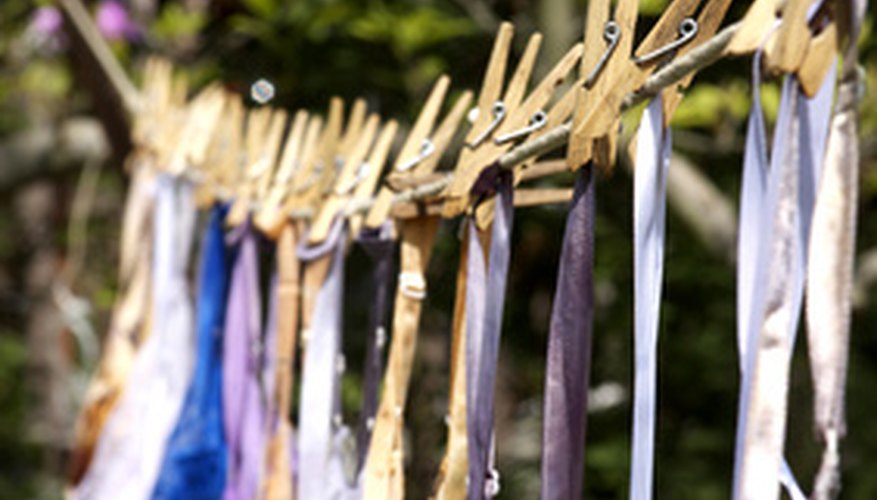Dylon dye works on cotton, linen, wool and viscose. Light shades can be used on synthetic blends but the blends don't always absorb the dye. It works for projects like tie-dyeing and batik and can be used to dye wood. This sort of dye works for craft projects and in the classroom.
- Dylon dye works on cotton, linen, wool and viscose.
- It works for projects like tie-dyeing and batik and can be used to dye wood.
Weigh fabric while it's dry and wash it on its usual cycle. Do not dry.
Wear rubber gloves to prevent your hands from getting stained.
Pour cold water into a stainless steel bowl with a flat bottom. Use enough water to cover the fabric. For wool, use hot water.
Run your tap water until it is at its hottest. Fill a 1 pint dish with the water and mix in the dye. Use 5 grams of dye powder for every 227gr. of fabric. Pour the dye into the large bowl.
- Pour cold water into a stainless steel bowl with a flat bottom.
- Fill a 1 pint dish with the water and mix in the dye.
Mix 113gr. salt and 1 packet Cold Fix with hot water. Add this to the dye solution. Black dye needs 227gr. of salt and 2 packets of Cold Fix. For wool, replace the salt with 384ml. vinegar.
- salt and 1 packet Cold Fix with hot water.
- of salt and 2 packets of Cold Fix.
Add the fabric to the dye solution. Move it around continuously for the first 10 minutes and periodically after. Make sure the fabric is completely submerged for one hour, or three hours for black dye.
Rinse the fabric in cold water until the dye is completely rinsed out and the water runs clear. For wool, rinse in warm water.
Wash the fabric in the washing machine using the usual detergent and cycle. Dry it in the dryer on low heat or hang it out of the sun.
- Add the fabric to the dye solution.
- Wash the fabric in the washing machine using the usual detergent and cycle.
TIP
Wash fabric separately for the following three washes in case the colour continues to bleed. Only use dye in non-porous containers because it can stain.
